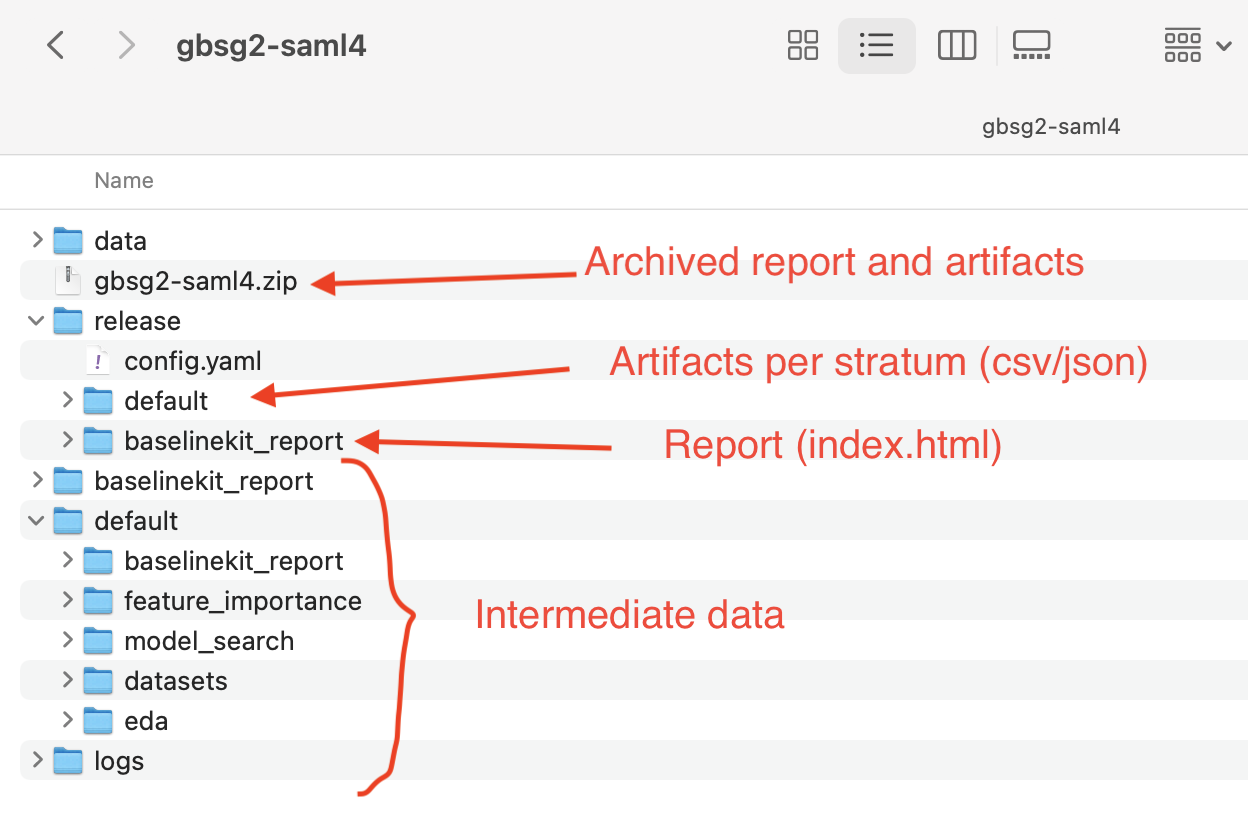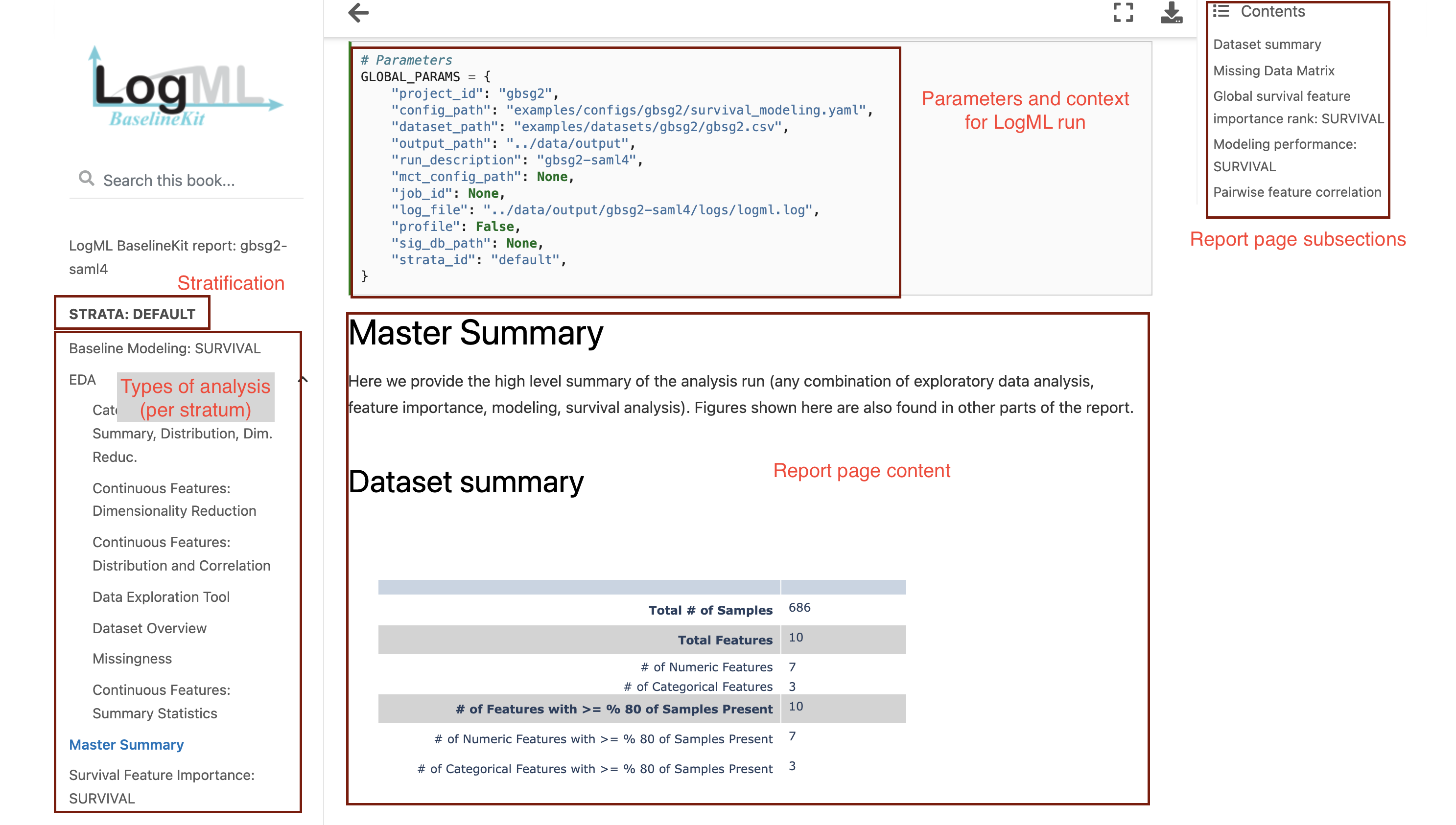Output Artifacts
There are several types of artifacts produced by LogML:
Report is the primary one. This is a set of HTML files produced from Jupyter Notebooks in a batch mode. It includes visual results - tables, charts, etc.
Data artifacts are number results of analysis. They are usually in form of CSV files and are specific to a particular analysis.
There are also diagnostic or low level artifacts, which can be also used, but require pretty high level of proficiency with python and LogML:
Log files - usually required in case as any problems as a first tool of diagnostics.
Jupyter Notebooks - files with .ipynb extension, which can be executed in Jupyter Notebook service launched in the same conda environment as LogML version which produced those notebooks.
Serialized models - pickled model object. Can be used for diagnostic or debugging.
In the image below we present an example of how output folder of the LogML run is structured:

Output Package
As a last step of pipeline LogML executes special action called release-artifacts. In carefully filters all the files, leaving only required data, and packs it into a zip file, named by the name of logml run.
In the image above it is named ‘gbsg2-saml4.zip’.
Report
Report is an ultimate output provided by LogML. General structure is represented below:
